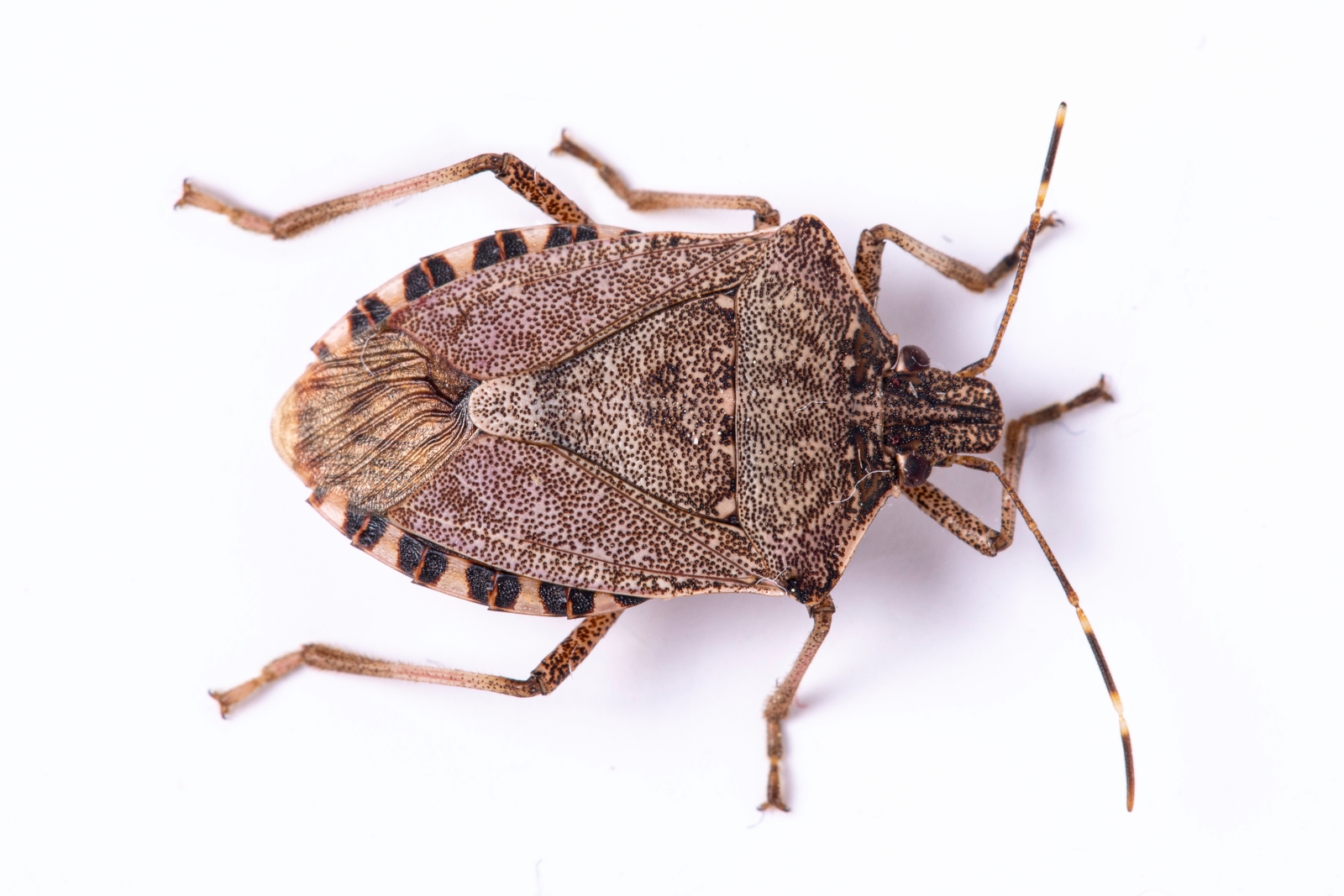What is that bug? Small and hard-shelled, brown and gray, it looks kind of like the shield of a Roman soldier. You have likely found a stink bug. Here’s how to keep them out of your home and garden!
There are a few native stink bug species, but we are mainly focusing on the non-native brown marmorated stink bug, Halyomorpha halys, which is a significant garden and agricultural pest.
What Are Stink Bugs?
Stink bugs, and our subject, H. halys, are part of the order Hemiptera, meaning they are a ‘true bug’ with a proboscis. They feed by sucking the juices out of plants.
The brown marmorated stink bug is native to China, Japan, and Korea. It likely hitched a ride on a ship and was first found in the United States in 1998. Finding favorable conditions, it has multiplied quickly and may be found annually in over forty states.
New research indicates that their range may be expanding as our climate changes. They are a severe pest of orchard, vineyard, and vegetable production, especially in the mid-Atlantic region.
You’ll find references to the brown marmorated stink bug calling it BMSB for short.
Why Are They In My House?
Stink bugs that mature during summer will often seek a nice, cozy, safe shelter for the winter: your home. They secrete a chemical to attract other stink bugs upon finding a suitable spot for a long winter’s nap. While they don’t do any structural damage to your house, they are a nuisance.
To minimize the invasion, seal up windows and foundations and quickly remove any stink bugs you do find. The hose on your vacuum can be an effective and satisfying solution. The ‘stink’ they make when killed or vacuumed is not the same one they emit to attract other bugs.
How Do Stink Bugs Damage Plants?
Stink bugs can cause injury to plants through their physical feeding. Like a huge mosquito that bites plants, they suck out the plant juices and can also carry plant diseases. Stink bugs are generalists. Unlike other host-specific garden pests, they will make a snack out of anything tasty.
More damaging from an economic view, stink bugs will also feed on the fruits of our plants and orchards. Apples, cherries, raspberries, peaches, nectarines, tomatoes, corn, grapes, beans, and others can be the victim. The fruit attacked by stink bugs is often unmarketable, and losses reach millions per year in the mid-Atlantic region.











Comments